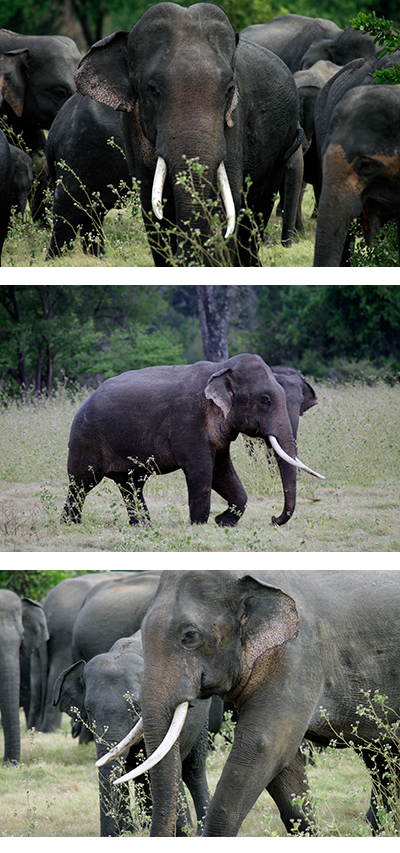



The Sri Lanka Elephant (Elephas maximus maximus) |
|
The Sri Lankan Elephant is one of the three subspecies of the Asian Elephant, one of the largest land mammals on earth. This subspecies found only in the island is the largest and the darkest amoung the Asian Elephants. The Sri Lankan Elephant is currently listed as endangered by the IUCN and has seen a reduction of its population by half; this being due to hunting during the colonial period and habitat loss in the 20th century. The Elephant is also symbolic to the culture of the island having being associated with the history of the Sinhalese civilization from early on. The elephants were used for domestic work such as transportation and construction in the ancient days as well as for war, with many accounts in the chronicles such as the famed Elephant named ‘Kandula’ of the 1st century BC Sinhalese hero King Dutugamunu as well as 16th century Portuguese accounts which state that the Sinhalese King Rajasinghe I had 2200 elephants in his army when attacking the fort of Colombo in 1587. The Elephant is also seen as a symbol of strength and majesty and is used to carry the casket of the Tooth relic of the Buddha in the annual Esala Perehara of Kandy. The average height of an adult male is 2.5 meters at the shoulder with the female slightly smaller than the male. Tusks are only found in few males and very rarely found in females. They weigh between 2000-5000 kg and can live up to 60 years. The gestation period of the elephant is one of the longest which lasts 22-23 months and usually one calf is born. The elephants being social animals live in herds of up to 12-20 animals and are headed by the oldest female. Males leave the herd as they reach adolescence and tend to live solitarily but are not far from the herd. They feed on the vegetation around them amounting to 275-300kgs a day. They feed during the early morning and late afternoon. They drink two to three times a day and being great swimmers they enjoy their time in the waterholes. The Sri Lankan Elephant once roamed the entire island but now is confined to the Dry zone with a very small number inhabiting the Peak Wilderness Sanctuary around the vicinity of Adams Peak. Although protected areas such as the large National Parks in the dry zone give shelter to elephants, around 65% still roam outside protected areas. This has led to an escalating Human-Elephant conflict in recent times. As per a census in 2011, Sri Lanka’s elephant population was numbered at 5,879 individuals. |
 |